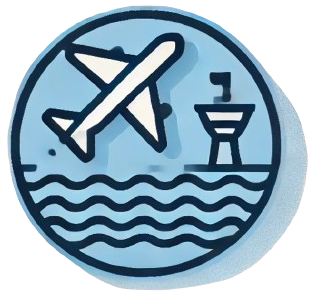Altitude Sickness and Pilot Strategies
Altitude sickness, also known as acute mountain sickness (AMS), can pose serious risks for individuals ascending to high elevations. While many travelers suffer from its effects, pilots have developed effective strategies to mitigate the risks associated with flying at high altitudes. Understanding these methods sheds light on how they maintain their performance and health in the cockpit.
The Role of Prebreathing Oxygen
One of the primary techniques that pilots use to prevent altitude sickness is prebreathing oxygen. Before ascending to altitudes between 18,000 and 43,000 feet, pilots often pre-breathe 100% oxygen for approximately 30 minutes. This practice helps to saturate the bloodstream with oxygen, thus reducing the risk of decompression sickness (DCS) during short exposures. By doing so, pilots can enhance their oxygen levels significantly, minimizing the symptoms associated with hypoxia, which includes dizziness and impaired judgment.
Understanding Altitude Discomfort
Moreover, pilots can experience discomfort at high altitudes due to several physiological factors. As the aircraft ascends, the air pressure decreases, leading to lower oxygen availability. This reduction can cause hypoxia, manifesting in symptoms such as:
- Fatigue
- Dizziness
- Cognitive impairments
Pilots are trained to recognize these symptoms and take appropriate actions, such as descending to lower altitudes or using supplemental oxygen, ensuring their safety and the safety of their passengers.
Navigating High Altitude Limitations
Flying at excessive altitudes poses additional challenges for pilots. If a commercial jet exceeds a certain altitude threshold known as ‘Coffin Corner’, it encounters a critical point where the stall speed and high-speed buffet conditions intersect. At this juncture, the aircraft cannot maintain altitude, which can compel it to descend suddenly. Therefore, disciplined adherence to altitude limits is vital for operational safety.
Regulations Ensuring Pilot Health
Regulatory bodies impose rules to safeguard pilot health and safety, one of which is the 8-hour rule. This regulation mandates that a pilot who has flown more than eight hours in a consecutive 24-hour period must rest for at least 18 hours before undertaking further duties. These regulations ensure pilots are well-rested and capable of functioning efficiently at high altitudes.
Financial Incentives for Experienced Pilots
Alongside health and safety factors, financial incentives also play a role in attracting and retaining experienced pilots. Senior captains flying for major airlines, especially on international routes, can earn substantial salaries, ranging from $350,000 to over $500,000 annually. This financial motivation, paired with the rigorous training to manage altitude effects, encourages pilots to invest in their health strategically and comply with airline policies for optimal performance.
| Income Range | Position |
|---|---|
| $350,000 – $500,000 | Senior Captains on International Routes |
Final Thoughts on Pilot Performance at Altitude
In conclusion, the challenges of altitude flying are met with rigorous preparation and strict regulations. Through techniques such as prebreathing oxygen, adherence to altitude restrictions, and the crucial 8-hour rule, pilots effectively mitigate the risks of altitude sickness. By understanding these practices, both passengers and aspiring pilots can better appreciate the dedication and expertise that goes into ensuring safe and comfortable flying experiences.
